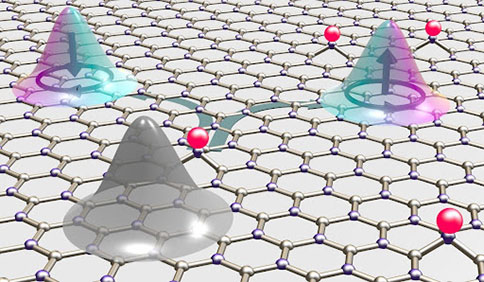Team makes new discovery in an emerging area of electronics
A team of researchers at York and Minho University have made what could be a vital discovery in an emerging field of electronics, and one which could lead to greener electronic devices such as computer processors.

Orbitronics capitalises on properties held by electrons which allow them to be harnessed for new technologies, and the team has published the paper Extrinsic Orbital Hall Effect: Orbital Skew Scattering and Crossover Between Diffusive and Intrinsic Orbital Transport to illustrate their findings.
Researcher Professor Aires Ferreira has led the research behind the paper. He says: “Electrons do more than just carry charge - they have properties that can make them useful in new technologies. Orbitronics is emerging as a new research field. It focuses on what we call orbital angular momentum (OAM).”
Professor Ferreira says the concept can be compared to the orbital rotation of planets. “When the Earth revolves around the sun,” he says. “The motion creates an OAM that measures the amount of rotation in a system. Harnessing this type of orbital motion in conductors can lead to low-power and tunable electronic currents.”
Dr Tatiana Rappoport, co-author of the study from the University of Minho, describes the potential impact of their discovery: “While current methods often require heavy-element materials, orbital currents are effective even in light, non-magnetic metals. The resulting orbital currents hold promise for energy efficient electronics, using cheaper, environmentally-friendly materials.”
Notes to editors:
Read Extrinsic Orbital Hall Effect: Orbital Skew Scattering and Crossover Between Diffusive and Intrinsic Orbital Transport, published in Physical Review Letters.